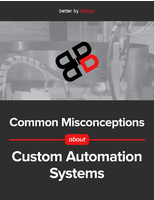ANSI approves IESO/RIA 6001-2011 standard.
Press Release Summary:
ANSI has approved IESO/RIA 6001-2011 Evaluation of HVAC Interior Surfaces to Determine the Presence of Fire-Related Particulate as a Result of a Fire in a Structure. Standard uses char as primary indicator and soot as secondary indicator of fire-related particulate, and also requires quantification of char/soot concentrations to allow comparisons with control sample. It does not determine what materials have been burned or what materials have been deposited on surface.
Original Press Release:
ANSI Approves IESO/RIA 6001-2011 for Evaluating Fire-Related Particulate in an HVAC system
IESO/RIA 6001-2011 Evaluation of Heating, Ventilation and Air Conditioning (HVAC)
Interior Surfaces to Determine the Presence of Fire-Related Particulate as a Result of a
Fire in a Structure Receives ANSI Approval
Rockville, MD - On February 15, 2012, the American National Standards Institute (ANSI) notified the Indoor Environmental Standards Organization (IESO) of the approval of the IESO/RIA 6001-2011 Evaluation of Heating, Ventilation and Air Conditioning (HVAC) Interior Surfaces to Determine the Presence of Fire-Related Particulate as a Result of a Fire in a Structure. This is the first ANSI-approved standard for IESO. It was produced in close cooperation with a committee convened by the Restoration Industry Association (RIA).
"The completion of this standard represents the efforts and expertise of many individuals, and we would like to acknowledge the IAQA and IESO Boards of Directors who provided the funding, leadership, staffing and guidance necessary to achieve this important milestone," said Brad Harr, chairman of the IESO Consensus Body.
The standard has been in development since early 2009 and will be used in the field to help determine if fire-related residues have been deposited on HVAC interior surfaces. The standard does not determine what materials have been burned in the fire or what specific materials have been deposited on a surface.
"Standards development takes time and the collective efforts of many," said Tom Yacobellis, chairman of the standard development subcommittee. "Special thanks and recognition go to our committee, the RIA Board of Directors and the IESO Consensus Body. This standard will provide the science to substantiate what restoration and remediation contractors recommend following a fire. "
The standard uses char as the primary indicator and soot as the secondary indicator of fire-related particulate. It also requires the quantification of char or soot concentrations to allow comparisons with a control sample, since merely identifying the presence or absence of char is not sufficient.
"This accomplishment represents a major milestone for RIA and IESO," said RIA President Frank Headen, CR, WLS, CMH. "It illustrates what can be done when organizations collaborate for the good of the industry at large. Congratulations to the subcommittee creating the first standard of its kind for the industry."
The new IESO-RIA standard will be available for purchase as a PDF and booklet in March. Those interested will find it online in both the IAQA and RIA online stores.
For more information on the standards currently under development by IESO, please visit www.ieso.org.
About the Indoor Environmental Standards Organization and the Indoor Air Quality Association
The Indoor Environmental Standards Organization (IESO) is a non-profit organization dedicated to the creation of consensus-based standards that provide solutions for healthy indoor environments. IESO is accredited as a standards development organization by the American National Standards Institute (ANSI). IESO was founded in 2002 and maintains its national headquarters in Rockville, MD. IESO is a wholly owned subsidiary of the non-profit Indoor Air Quality Association, Inc.
About the Restoration Industry Association
The Restoration Industry Association (RIA) has member firms worldwide. RIA provides industry leadership, supports science, and promotes best practices for cleaning and restoration through certification, training and standards development. More information is available on the RIA website: www.restorationindustry.org.




